Linear LED lamps: characteristics, types + nuances of the installation of linear lamps
The now popular linear LED lamps were able to confidently supplant fluorescent ones, which are gradually fading into the past. The output of diodes is actively growing, because they attract practicality and excellent performance. However, the assortment is still little known to the buyer. Do you agree?
You will learn all about the design features, advantages and disadvantages, varieties of tubular LED lamps from our article. We will tell you how to find the best option for you, based on the characteristics. Our home masters will find a guide for installing LED devices instead of old fluorescent ones.
The content of the article:
Distinctive features of LEDs
Light-emitting diode (LED) light sources gradually take the place of fluorescent lamps. They have every chance of completely crowding out other lighting technologies. Distinctive features are economical, device features and a long service life.
In addition, diodes do not require special measures for disposal. In contrast, fluorescent linear lamps, massively used earlier in enterprises, in trade areas and offices, need specific utilization procedure, because they contain mercury. Whereas with overview samples, this expense item is leveled.

Led devices give even and moderately contrasting, high-quality lighting. Such light is considered safe for vision and tireless for the human nervous system. Therefore, it is not surprising that such a high stir on this line of devices in educational institutions.
However, tubular diodes are used not only in the educational and industrial segments, but also in others - to create a light composition in residential premises, restaurants, gyms, pools, etc. In some cases, they are used as the main source of illumination, in others - in the role of highlighting.
Additional possibilities for the organization of illumination are presented - the angle of light can be adjusted by turning the lamp. This streamlines lighting in areas where there is a need. Thanks to this technique, additional savings are achieved through the use of fewer lamps.

The LED lamp does not spend time on ignition - this process is reproduced instantly, while the maximum level of working brightness is immediately achieved. Subject to interruptions in the power supply network, power surges, of course, the ballast of the lighting product may fail.
However, the worst option awaiting the consumer is the replacement of one burned-out device, since each linear device is represented by an individual mechanism with its own electronics.

If the modernization of obsolete fluorescent illuminators is carried out, then the most practical solution is lamp change. In this case, both the old lamp housing with the previous cartridges can be involved, and a new one can be purchased.
In the first case, it will be necessary to select diodes with full compliance with the previous size. Before installation, it is necessary to remove from the circuit all electromagnetic and electronic ballasts or qualitatively shunt them.
Key Benefits of LED
Linear LED lamps are an innovative element in industrial, commercial and public systems of lighting organization due to insufficient public awareness of the main advantages of this type of lighting technology.
Key features are as follows:
- Connection to a network with a nominal value of 220 V directly without the use of ballasts and chokes.
- Low power consumption, which allows significant savings.
- Wide dispersion angle - up to 230 °.
- Depending on the manufacturer, the service life is 50,000-100,000 hours.
- The environmental friendliness of the diodes does not harm the environment; disposal is carried out together with household waste.
- Complete lack of flicker.
- It does not heat up during prolonged use.
Also, the features of the constructive device of the housing make it possible to achieve resistance to the influence of negative factors: temperature, moisture and voltage drops, mechanical stress. And due to the high color rendering coefficient and a brightness level of 120 lm / W, the correct visualization of surrounding objects is achieved.

The elimination of the pulsation effect was made possible by equipping with special elements - amplifying lenses and light diodes, which are responsible for compaction and concentration of the light flux.
In addition to the natural monochrome cold and warm white tones of lighting, manufacturers offer various color effects (RGB performance), which are mostly used for decorative purposes by entertainment venues or to illuminate billboards.
The main problems accompanying the mass introduction of this technology are the high price category and the lack of state control of quality characteristics presented in product stores. About 50% of lighting devices do not comply with current GOST standards.
Lamp design
An optional device of linear light sources is represented by a driver and soldered LEDs placed on a strip of getinaks. All elements are in an elongated bulbous polycarbonate housing.
Using such material, manufacturers were able to eliminate the problem of mechanical damage during installation work. Since the device already has a ballast device, the handset is connected directly to the mains without ballasts.

LED tubes come standard with a G13 socket. There are two pins on the inside of the flask, the distance between which is 13 mm. They are connected by copper wire, so electricity can be supplied to any of them.
The length can vary from 600 mm to 1.5 m, power 9-25 watts. Savings on electricity bills can be up to 65%. For example, if you install an LED in place of a fluorescent lamp with a power of 18 W, its nominal value will correspond to 9 W.

The lamp may be transparent or have a matte finish. In the case when the diffuser is not provided on the lamp, it is better to opt for a matte version, if available, a transparent one will do.
LED lamp classification
The main purpose of linear lighting is the replacement of fluorescent lamps, so most of the tubular models are made with a G13 socket.
Location Conditions
Fully equipped linear lighting devices consist of a luminaire housing and one or more lamps. They can serve as the main or local lighting of various zones both indoors and in the exterior of the building or landscape design.
In addition to the main selection criteria, characteristics of a diode lampThere are a few more important criteria for the buyer.
There are various devices, according to the characteristics of which the classification is carried out:
- location;
- installation method;
- a kind of cap;
- light intensity (lm / W);
- types of LEDs used and their quantity.
All these aspects are important in the process of selecting the right device, because not all products have a sufficient coefficient of protection from the adverse environment or are not mobile enough to equip the interior of the room.

For the street, linear LED floodlights are used, which can be of various shapes and use any type of diode: monochrome or full color. The former are capable of reproducing only one spectral range of lighting - white and its shades.
The second - any color options. Based on the climatic conditions of accommodation, devices are designed for different installation zones. Depending on this, an appropriate indicator of the degree of protection against an aggressive environment is selected.

Lighting technology marked IP65 and IP67, i.e. with the specified degree of protection, suitable for installation on the street and in rooms with high humidity / dust formation. For example, lighting is organized in warehouses, in production halls, pools, lighting of aquariums and open external territories - parking lots.
The instrument housing is sealed.Unique self-cleaning options also speak in their favor - due to heating during operation, ice does not form on the case and snow does not accumulate. Devices with IP20 are designed for standard parameters with low humidity. They are used in residential or office premises.

Linear phytolamps have a special spectrum of rays that promotes the formation of chemical processes for the growth and development of plants. With their help, the continuation of daylight hours for certain varieties of root crops is organized, which safely affects their photosynthetic activity.
Basic installation methods
Overhead linear fixtures have the easiest mounting system - it is enough to fix them on a flat plane. In this case, the level of inclination of the surface does not matter - the lamp has a swivel base.
Structurally, the device is designed so that the user has the ability to change the angle of illumination. It is due to such universality that the models are recognized as the most popular.

The next installation option requires preliminary preparation and organization of a niche. It is used in the construction of suspended and suspended ceilings to organize full lighting.

Suspended modular systems are placed at a certain distance from the ceiling by means of decorative chains or cables.
This mount allows you to create a whole light composition from several LED tubes, repeating the shape of various shapes. To do this, they are interconnected with special plugs.

Hanging modules include phytolamps. If they are equipped with greenhouses, they most often have a standard - solid line along the rows of seedlings. At home, basically one unit is used, which is installed above the plant.
Lamp / bulb connection system
In the overview models of lighting, two types of socle are used: G and R. However, it should be borne in mind that every year manufacturers expand their product line.

Initially, we will examine what the G-pin connection system is like. In the marking, a letter follows the letter, indicating the distance between the plugs. This version of LED-lamps is available in the form of an elongated bulb, as indicated by the letter T in the abbreviation. Attachment plugs are represented here by a pair of contacts of a certain length and thickness.
Tubular (T) LEDs can be of several typical sizes:
- T5 - 5/8 inch / 15.9 mm;
- T8 - 8/8 inch / 25.4 mm;
- T10 - 10/8 inch / 31.7 mm;
- T12 - 12/8 in. / 38.0 mm.
Cartridge with R deep contacts is found exclusively in floodlights. According to the characteristics, the angle of light flow is insufficient to cover a large area, so it is advisable to use them for zonal illumination.
Color Temperature Options
The light intensity is selected individually.
Compliance standards are represented by the following values:
- for a power of 25 W, a light flux of 220 Lm is characteristic;
- 40 W - 415 Lm;
- 60 W - 710 Lm;
- 75 W - 935 Lm;
- 100 W - 1340 Lm;
- 150 W - 2160 Lm;
- 200 W - 3040 Lm.
However, it is better to take into account the optimal indicators that do not irritate eyesight: warm white light - 2700 K, natural white - 4200 K. Such brightness is equal to standard sun light, comfortable for the retina.
Differences between LEDs
Technical characteristics of different types of LEDs used are presented in a wide range. Their sizes, quantity and parameters are indicated in the name of the device.

Crystals of the SMD form factor, unlike other types, are mounted on the surface of a ceramic substrate, which, in turn, is connected to a circuit board. On one substrate, their number is from one to three.
Due to the design features, they can qualitatively remove heat. As a result, the parts do not overheat even during prolonged use, which contributes to a significant increase in service life.

The most common options are SMD5630 and 5730. They are powerful and heavy-duty groups and are used in power networks with a rating of no more than 350 mA.
There are modifications mounted in the housing, with electricity consumption up to 1 A, with indicators of 1-3 watts. In products, power reaches 10 watts, but a separate cooling system is required for their installation.

SOV type emitter chips are mounted directly on the board. Due to the coating with a phosphor layer, the characteristics of heat sink, uniformity of light projection are significantly improved and the cost of the matrix is reduced.
Features of the installation of linear fixtures
Linear LED lamps are installed within 5 minutes - just apply voltage to one of the plugs, it does not matter which one. It can be mounted independently or in combination with a lamp.
We give an example of installing a lamp. So, on a tube of T8 or T5 format with a G13 cap there are 4 contacts - on both sides, 2. There are several types of cartridges for this type of cap. Their distinctive characteristics consist in the method of fixing to the device body, as well as the method of connecting conductive lines to the socket.

To connect a lighting device, it is necessary to supply voltage to it with a contactor, which is included in the package. But first, open the lamp.
To do this, squeeze out the two plugs and remove them, by alternately pressing a screwdriver on each of the side grooves, without making much effort so as not to break the locking legs. Using the clamping terminal, the lamp contacts are connected to the mains wires. The fastening place and connecting wiring with clamps are covered with a decorative cap.
To fix the device, several fasteners and self-tapping screws are included. At the desired site, we drill backlash for mounting and fix the lamp on the installed clips. If there are several lamps, they are easily joined using adapters, also supplied in the kit.
Replacing fluorescent lamps with LED
The most common models of old types of fluorescent lamps are presented in two formats: 4 * 18 and 2 * 36. Both of these products are compatible with lamps in the T8 bulb and G13 socket.
Manufacturing companies produce LED lamps for various types of ballasts. First you need to determine what type of equipment is in the device.

For example, Philips launches a series of LEDs labeled HF to handle electronic ballasts. This type of lamp allows you to not change the wiring diagram of the lamp, and their replacement is made as traditional fluorescent.
Let's consider how to replace old lamps with LED ones in lamps with electronic ballast.
First of all, the power on the shield is turned off. Further, the process looks like this:
- Remove the reflector.
- Disconnect the wires from the terminal block.
- After dismantling the device itself.
- We remove old lamps and starters.
- We disconnect the wires from the lamp holder using an awl and a screwdriver.
Next, you need to do rework wiring. To do this, we transform the wiring diagram of the lamp - all the lamp holders are connected in parallel, the wiring is wound into the terminal block for connection to the mains voltage.
Since the second side acts as a fastener, all cables are dismantled here. A similar process is reproduced with ballasts - removal of wiring and disconnection from the circuit. We put the cap into the lamp holder on the corresponding side and the device can be installed in its original place.
If you plan to control the radiation intensity of a diode lamp, include Dimmer. But it should be remembered that not all LED devices are able to work in tandem with this dimmer. Dimmability indicated in the technical passport of the product.
Conclusions and useful video on the topic
How to make LED linear lighting for the kitchen working area yourself:
Video tutorial on remaking a lamp for bulb LED lamps:
Overview of the linear version of the Leek Le Eco LED 36W lighting technology:
When planning the installation of a new lighting device, the consumer should not forget about the wide possibilities offered by manufacturers.
A diverse series of luminaires with transparent, matte or corrugated ceiling designs come with LED lamps of different capacities and a range of illumination that can be selected based on needs.
Want to talk about how to choose a linear diode lamp for your home or office? Have information to share with potential buyers of such devices? Please write comments in the block below, ask questions and post a photo on the topic of the article.

 Bulbs for spotlights: types, characteristics, nuances of choice + best brands
Bulbs for spotlights: types, characteristics, nuances of choice + best brands 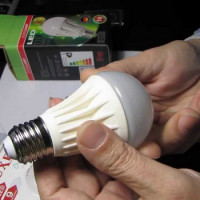 Which LED lamps are better to choose: types, characteristics, choice + best models
Which LED lamps are better to choose: types, characteristics, choice + best models 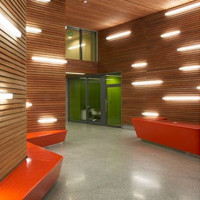 T8 LED lamps: characteristics, comparison with fluorescent + best manufacturers
T8 LED lamps: characteristics, comparison with fluorescent + best manufacturers 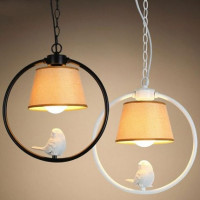 220V LED lamps: characteristics, marking, selection criteria + review of the best brands
220V LED lamps: characteristics, marking, selection criteria + review of the best brands 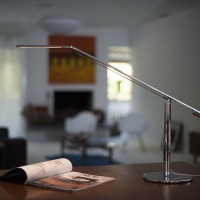 LED table lamps: types, selection rules + review of the best manufacturers
LED table lamps: types, selection rules + review of the best manufacturers 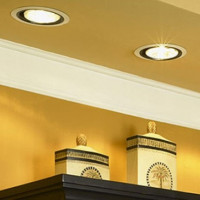 LED Ceiling Lamps: types, selection criteria, best manufacturers
LED Ceiling Lamps: types, selection criteria, best manufacturers  How much does it cost to connect gas to a private house: the price of organizing gas supply
How much does it cost to connect gas to a private house: the price of organizing gas supply  The best washing machines with dryer: model rating and customer tips
The best washing machines with dryer: model rating and customer tips  What is the color temperature of light and the nuances of choosing the temperature of the lamps to suit your needs
What is the color temperature of light and the nuances of choosing the temperature of the lamps to suit your needs  Replacement of a geyser in an apartment: replacement paperwork + basic norms and requirements
Replacement of a geyser in an apartment: replacement paperwork + basic norms and requirements
No wonder they supplanted fluorescent lamps. Here you have excellent lighting characteristics and maneuvers for all kinds of design moves. They are really superior in price, but they will fix it soon.
The quality of the product is rubbish, a month later the lamps began to crumble.